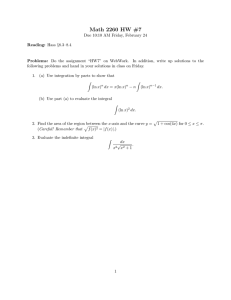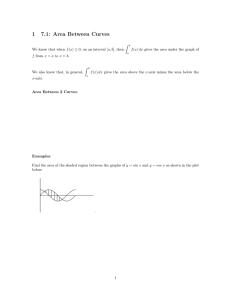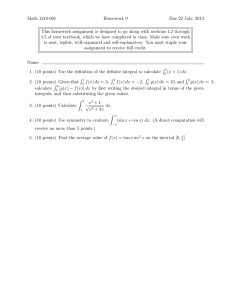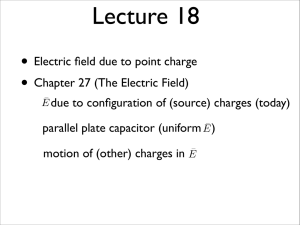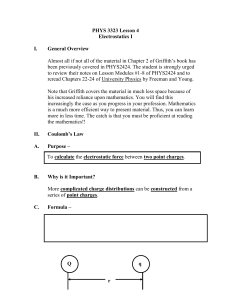Sample Problem
advertisement
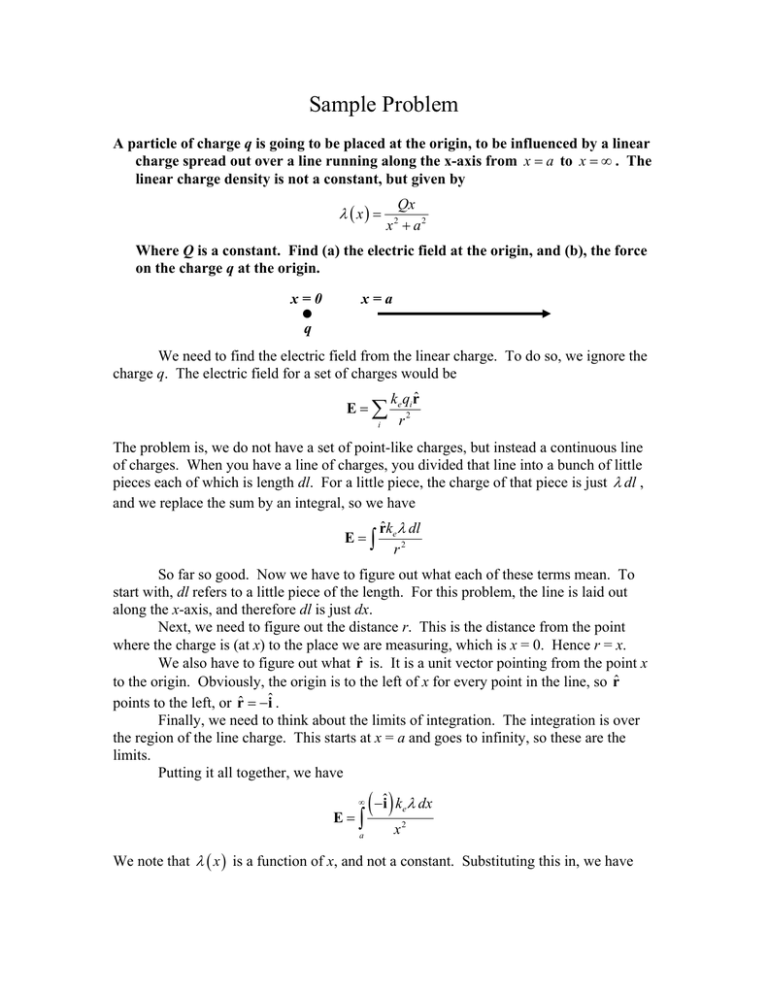
Sample Problem A particle of charge q is going to be placed at the origin, to be influenced by a linear charge spread out over a line running along the x-axis from x a to x . The linear charge density is not a constant, but given by x Qx x a2 2 Where Q is a constant. Find (a) the electric field at the origin, and (b), the force on the charge q at the origin. x=0 x=a q We need to find the electric field from the linear charge. To do so, we ignore the charge q. The electric field for a set of charges would be E i ke qi rˆ r2 The problem is, we do not have a set of point-like charges, but instead a continuous line of charges. When you have a line of charges, you divided that line into a bunch of little pieces each of which is length dl. For a little piece, the charge of that piece is just dl , and we replace the sum by an integral, so we have E rˆke dl r2 So far so good. Now we have to figure out what each of these terms mean. To start with, dl refers to a little piece of the length. For this problem, the line is laid out along the x-axis, and therefore dl is just dx. Next, we need to figure out the distance r. This is the distance from the point where the charge is (at x) to the place we are measuring, which is x = 0. Hence r = x. We also have to figure out what r̂ is. It is a unit vector pointing from the point x to the origin. Obviously, the origin is to the left of x for every point in the line, so r̂ points to the left, or rˆ ˆi . Finally, we need to think about the limits of integration. The integration is over the region of the line charge. This starts at x = a and goes to infinity, so these are the limits. Putting it all together, we have E a ˆi k dx e x 2 We note that x is a function of x, and not a constant. Substituting this in, we have E a ˆi Qk x dx k Qˆi e x x a 2 2 2 e xx a dx a2 2 Note that we took all the constants we could out of the integral, because that makes the integral simpler. Now, I made this problem up quickly, so the integral came out a little nasty. When faced with a nasty integral, YOU should go look it up on the handout listed online, which includes several useful integrals. We’ll pretend this one is given, and pretend that it is given by dx 1 x2 ln x x 2 a 2 2a 2 x 2 a 2 We substitute this into the previous equation, then we have E keQˆi a 2 dx 1 ˆi ln x k Q 2 2 e 2 2 2 2a xx a x a a a2 ke Q ˆ 2 ln ln . i 2 2 2a 2 2 a 2 a a That first tern looks scary, but if you think about it, 2 is really large compared to a2, so in fact the numerator and denominator are almost equal, and their ratio is effectively one. The second term is easy, so we have E k Q ln 2 1 k Qˆi 0 ln 12 e 2 ˆi . 2 e 2a 2a To finish the problem is now trivial. We simply use F qE to obtain F keQq ln 2 ˆ i. 2a 2
